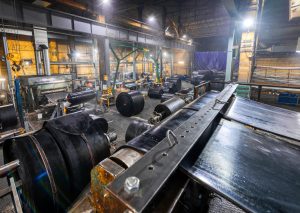 Introduction: The Three Princes of Serendip, where Serendip is the Classical Persian name for Sri Lanka, is a fairy tale in which the protagonists ‘were always making discoveries, by accidents and sagacity, of things they were not in quest of.’ Based on this, Horace Walpole coined the word serendipity in 1754 to mean inventions or discoveries made by accident. Science and technology offer many anecdotes of serendipitous discoveries and inventions. Here is the sixth such story in a series about serendipitous, patented inventions.
Introduction: The Three Princes of Serendip, where Serendip is the Classical Persian name for Sri Lanka, is a fairy tale in which the protagonists ‘were always making discoveries, by accidents and sagacity, of things they were not in quest of.’ Based on this, Horace Walpole coined the word serendipity in 1754 to mean inventions or discoveries made by accident. Science and technology offer many anecdotes of serendipitous discoveries and inventions. Here is the sixth such story in a series about serendipitous, patented inventions.
The word rubber has entered everyday language. Rubbery, rubber (eraser), rubber bands, rubber tubes or hose, rubber dolls, rubber sheets, rubber mats, rubber stamps, and so on, even though most of these things are no longer made from natural rubber. The word rubber itself is said to be a contraction of Indian rubber – one of the names by which it was known. It is also referred to as latex, caoutchouc, and gum elastic. It was known as rubber because it was used for erasing or rubbing off pencil marks from paper.
Even though natural rubber, also called latex, was used to make various products, including vehicle tyres, it had some drawbacks, mainly when used to make tyres. The tyres would get soft with temperature, become sticky, debris on the road would stick to it, and the tyres would eventually burst. Many were working on improving the quality of rubber to make it more suitable for making tyres. The American inventor Charles Goodyear was one such.
One day in 1939, when Goodyear was working in his kitchen laboratory, a mixture of rubber and sulphur accidentally fell on a hot pan. He found that the rubber had become harder and remained pliable instead of melting, as he would have expected it to. It was a big surprise for him. He worked on this accidental invention for years and finally patented his process in 1844. The process of treating rubber with sulphur and heat came to be known as vulcanisation.
Vulcan is the name of the Roman god of fire and is associated with sulphur and heat, both of which are important elements in the process invented serendipitously by Goodyear. The term vulcanisation was coined by William Brockedon, a friend of Thomas Hancock, who obtained a British patent for the process. There are conflicting reports, by both Brockedon and Hancock, about how the latter came to invent the vulcanisation process – independently or by analysing samples of vulcanised rubber made by Goodyear. Interestingly, Hancock’s own GB patent predates Goodyear’s patent by eight weeks.
Even though the essential ingredients of making vulcanised rubber are sulphur and heat, a great many variables may be employed to obtain rubber with different properties. Those variables are temperature, sulfur content, accelerators, curing agents, fillers, and reinforcements, among others. The vulcanisation process came to be used to treat polymers other than natural rubber and is widely used.
The name Goodyear was almost synonymous with rubber products. The Goodyear Tire & Rubber Company® was founded in 1898 and named so in Goodyear’s honour. However, Goodyear himself did not profit much from his invention as he was involved in many lawsuits to protect his patent rights.
Author: J L Anil Kumar
First Published by: Lexology here



